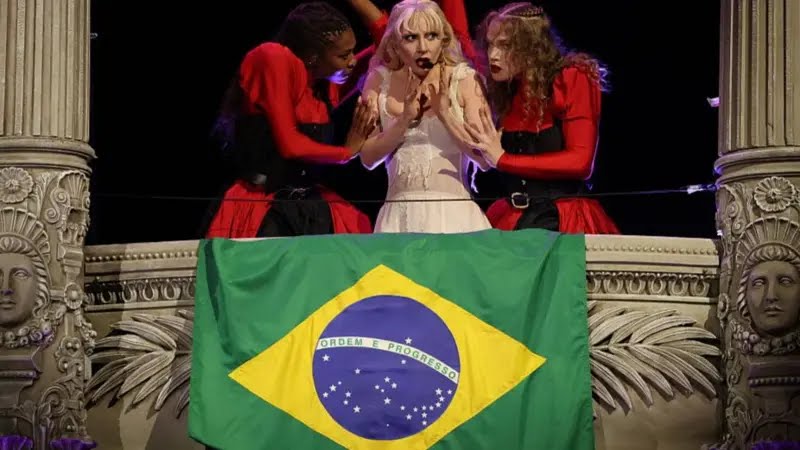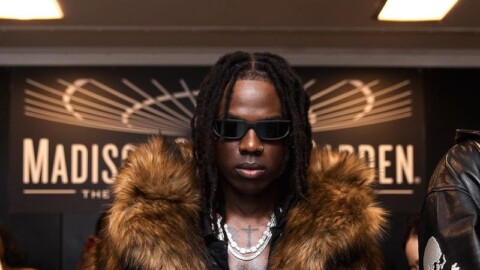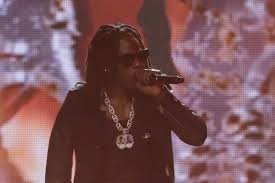Brazilian authorities recently thwarted a bomb attack that had been planned for a Lady Gaga concert on Copacabana beach in Rio de Janeiro, which was set to take place on Saturday.
The Civil Police of Rio de Janeiro, in coordination with the Ministry of Justice, disclosed that a group of suspects had been attempting to recruit individuals to carry out bombings during the event.
The objective behind the plot was not only to cause harm but to gain social media notoriety, according to the police report.
The authorities revealed that the mastermind behind the attack and a teenager were arrested as part of the operation.
Lady Gaga’s team, however, only learned about the bomb threat the morning after the concert. In a statement, a spokesperson for the pop star confirmed that they had not been informed of any potential security issues before or during the performance.
“We learned about this alleged threat via media reports this morning,” the spokesperson told The Hollywood Reporter.
“Prior to and during the show, there were no known safety concerns, nor any communication from the police or authorities to Lady Gaga regarding any potential risks.”
The concert, which was free to attend, saw more than two million people gather on the famous Copacabana beach.
The police investigation revealed that the suspects had been spreading hate speech and targeting specific groups, including children, adolescents, and the LGBTQ+ community.
They were also responsible for encouraging violence and radicalizing young people through online groups. The authorities stated that the group was using coded language and extremist symbols to recruit teenagers.
The plot, dubbed “Operation Fake Monster,” was initiated after intelligence from Rio state police uncovered the online activity.
“These groups were promoting violent content, including self-harm, as a form of belonging and challenge among young people,” the police noted in their statement.
As part of the operation, the police issued search warrants across several Brazilian states, including Rio de Janeiro, Mato Grosso, Rio Grande do Sul, and Sao Paulo.
Law enforcement seized electronic devices and other materials during the raids. The primary suspect, believed to be the mastermind behind the attack, was arrested for illegal possession of a firearm in the southern state of Rio Grande do Sul.
Meanwhile, the teenager involved in the scheme was apprehended for storing child pornography in Rio.
The police emphasized that the suspects had previously identified themselves as part of Lady Gaga’s fan base, commonly known as “Little Monsters.”
The police’s swift action prevented what could have been a devastating attack on the concert, but the unsettling nature of the plot raised alarm among the public.
Despite this, the event itself proceeded as planned, and Lady Gaga’s performance marked an emotional return to Brazil. The concert was part of her international tour to promote her latest album, Mayhem.
Lady Gaga, who had not performed in Brazil since 2012, wore Brazil-themed costumes during some of her acts, showing her appreciation for the host nation.
During her performance, Gaga expressed her deep gratitude to the Brazilian audience. Holding a Brazilian flag in her hands, she told the crowd, “You waited for more than 10 years for me,” a statement that was met with loud cheers and applause from the massive crowd.
Her heartfelt words highlighted the special connection between the pop star and her Brazilian fans, who had eagerly anticipated her return to the stage.
The performance also included several moments where the artist paid homage to Brazil’s rich cultural heritage, including outfits inspired by the national football team’s iconic colors.
The Brazilian government had funded the concert in an effort to help revitalize the local economy, anticipating that the event would generate significant revenue for Rio de Janeiro.
Officials had hoped that the concert would bring in as much as $100 million (£75 million) in tourism and related economic activity. In light of the bomb threat, however, security measures were heightened, with a massive operation involving 5,000 police officers.
Attendees were required to pass through metal detectors, and drones, along with facial recognition cameras, were deployed to ensure the safety of the crowd.
The deployment of such extensive security measures highlighted the growing concerns over public safety at large-scale events.
While the concert was successfully held without incident, it was clear that the threat of violence had placed the organizers under pressure.
Nevertheless, Lady Gaga’s show went on as a resounding success, with the artist’s emotional connection to her audience evident throughout the night.
“The crowd’s energy was unbelievable,” she later tweeted, expressing her gratitude to the fans who had waited over a decade for her return to Brazil.
The incident raised questions about the role of social media in inciting violence, especially among vulnerable groups like teenagers.
The police’s discovery of online groups promoting hate and violence underscored the risks of unchecked digital extremism. For Lady Gaga, the experience served as a reminder of the unpredictable nature of public events, but her ability to connect with her fans remained unshaken.
Despite the security scare, the concert in Rio de Janeiro marked a moment of triumph for the singer and her loyal “Little Monsters” in Brazil.
In the end, the thwarted bomb plot and the subsequent investigation into the suspects underscored the ongoing challenges of securing large public events.
Yet, Lady Gaga’s performance stood as a testament to the resilience of her fanbase and the enduring power of music to unite people, even in the face of potential tragedy.
The fact that the event was able to proceed without harm was a relief to fans and organizers alike, who had worked tirelessly to ensure its success.










